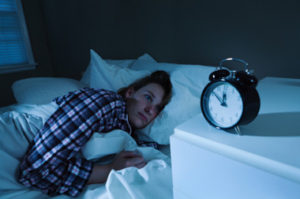 Lower back pain makes it hard to fall asleep, and it can startle you awake at any hour of the night. To help you reclaim your sleep schedule, here is a simple guide to sleeping with lower back pain:
Lower back pain makes it hard to fall asleep, and it can startle you awake at any hour of the night. To help you reclaim your sleep schedule, here is a simple guide to sleeping with lower back pain:
1. Sleep on your side to relieve pain from a pulled back muscle
One of the most common causes of lower back pain is a pulled back muscle, which occurs when a muscle in your lower back is strained or torn as a result of being over-stretched. Symptoms from a pulled back muscle typically resolve within a few days, but the intense pain can make it difficult to fall asleep at night. Worse yet, the longer you lie in the bed, the more de-conditioned your body gets and the worse your symptoms may become.
No single sleeping position works for every person with a pulled back muscle, but a good place to start is to test sleeping on your side. When sleeping on your side, try the following:
- Avoid a tight curled-up fetal position (knees pulled in toward the body), and instead sleep with your body slightly elongated.
- Slip a slim pillow between your knees to support the natural curvature of your spine.
- Find a head pillow that holds your head midway between each shoulder. If your pillow is too thin or too thick it can bend your neck at an uncomfortable angle.
You may also benefit from wearing a disposable heat wrap to bed to help alleviate the pain from a pulled back muscle. These wraps deliver muscle-relaxing, low-level heat over the course of several hours—and so they may help you both fall asleep faster and stay asleep longer.
By Kevin Ju, MD
07/27/2017
Continue reading the full article from Spine Health here.

